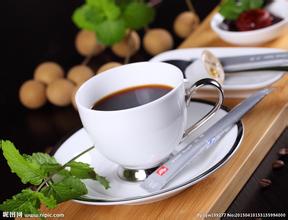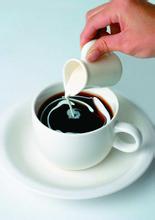Introduction to the description method of the price and flavor of the manor of the name of the rose summer coffee bean
The origin of the name of Rosa coffee bean
In 2007, Guatemala added the eighth coffee producing area, Acatenango Valley (R), which we translated into "Akatilang region".
In 2007, Anacaf é (Guatemalan Coffee Association) not only promoted it at the SCAA exhibition, but also arranged a special topic to explain to the international judges during the national competition. In the past, Guatemala claimed to have seven major producing areas, not only distinguishing features, but also giving buyers and consumers a good memory. Antigua, Micro Plateau, Lake Attitan, Koban Rain Forest and so on, each district can find excellent manors and good coffee with local characteristics.
Acatenango is located in Chimaltenango province, Guatemala. More than 5000 hectares of coffee farms in the region have fertile volcanoes, mainly located in two major volcanic mountains, and almost all have forests and shade trees. As can be seen from the above photos, almost all of the estates are shaded and planted, and the main varieties are bourbon and some Catuai and Caturra.
Akatilango two major volcanoes, Volcan de Fuego and Volcan Acatenango respectively, especially Acatenango is the third peak of Central American volcanoes, and across the Fuego volcano is the Yatitan Lake region. The annual rainfall in this area is 48 to 72 inches, and the average annual temperature is 14 ~ 31 degrees C. the temperature difference is large enough, so the density of beans is compact, which is helpful to the flavor. The coffee harvest season is mainly from mid-January to March. At present, the Kaqchiquels people still live in this area and maintain traditional farming methods; in total, there are about 4000 farmers in this area, and coffee cultivation dates back to 1880.
Rosa originated from a very rare wild species in Ethiopia, and the beans may be named after this coffee bean found near the local village called Rosa. The coffee tree is tall, its leaves are slender, and it is not afraid of coffee rust. It is characterized by a wide gap between branches on the trunk.
The appearance of raw beans is slender, and ripe beans have strong and rich fruit aroma. I personally feel that there is a strong sweet smell of roasted sweet potato, which is my favorite. Because the harvest of this variety is very low, it can not be purchased by commercial trade. So little cultivation in Panama, Jamaica, Malawi, Kenya, Guatemala and other countries
Won the first prize of the Panama National Treasure Bean Cup Test Competition in 2005, 2006 and 2007. In 2007, the International famous Bean Cup Test sponsored by the American Fine Coffee Association (SCAA) won the championship again, and the bidding price was sold at US $130 per pound, setting a record for the highest price in the history of competition beans. It is reported that the later Panamanian national treasure bean competition will be divided into two groups: Rose Summer and non-Rose Summer, so as not to be robbed of the brilliance of other varieties by Rose Summer. Rosa is a member of the Tibika family, but it became famous more than 70 years after leaving Ethiopia, and fulfilled the saying that Ethiopia is a treasure trove of Arabica genes. Giving a variety to go abroad is enough to stir up trouble in the coffee market.
Geisha, which is grown in many parts of the world, is the new king of boutique coffee, among which Panama, Guatemala, Colombia and other Latin American countries have higher quality and higher prices.

Important Notice :
前街咖啡 FrontStreet Coffee has moved to new addredd:
FrontStreet Coffee Address: 315,Donghua East Road,GuangZhou
Tel:020 38364473
- Prev

Introduction of coffee flavor and taste characteristics of manor coffee in Xidamoguji coffee producing area of Ethiopia
Panama Pokuit Butterfly (Panama Boquete Butterfly) Origin: Boquete,Panama Bean seed: 40%Geisha, Catuai, Caturra processing Plant: Hacienda La Esmeralda altitude: 1600m treatment method: Washed picking processing time: 02pm 2014 roasting degree: Light-Medium tea, taffy butterfly coffee from Pakistan
- Next

Description and treatment of Sidamo Coffee Flavor with slightly earthy Flavor introduction to the Grinding degree of the Manor
Sidamo coffee beans Yemen: Mocha Sanani, Mattari India: Malabar, Karnataka, Tellichery Vietnam: Weasel Coffee, Indonesia: Java, Mandheling, Ankola, Kopi
Related
- Detailed explanation of Jadeite planting Land in Panamanian Jadeite Manor introduction to the grading system of Jadeite competitive bidding, Red bid, Green bid and Rose Summer
- Story of Coffee planting in Brenka region of Costa Rica Stonehenge Manor anaerobic heavy honey treatment of flavor mouth
- What's on the barrel of Blue Mountain Coffee beans?
- Can American coffee also pull flowers? How to use hot American style to pull out a good-looking pattern?
- Can you make a cold extract with coffee beans? What is the right proportion for cold-extracted coffee formula?
- Indonesian PWN Gold Mandrine Coffee Origin Features Flavor How to Chong? Mandolin coffee is American.
- A brief introduction to the flavor characteristics of Brazilian yellow bourbon coffee beans
- What is the effect of different water quality on the flavor of cold-extracted coffee? What kind of water is best for brewing coffee?
- Why do you think of Rose Summer whenever you mention Panamanian coffee?
- Introduction to the characteristics of authentic blue mountain coffee bean producing areas? What is the CIB Coffee Authority in Jamaica?

